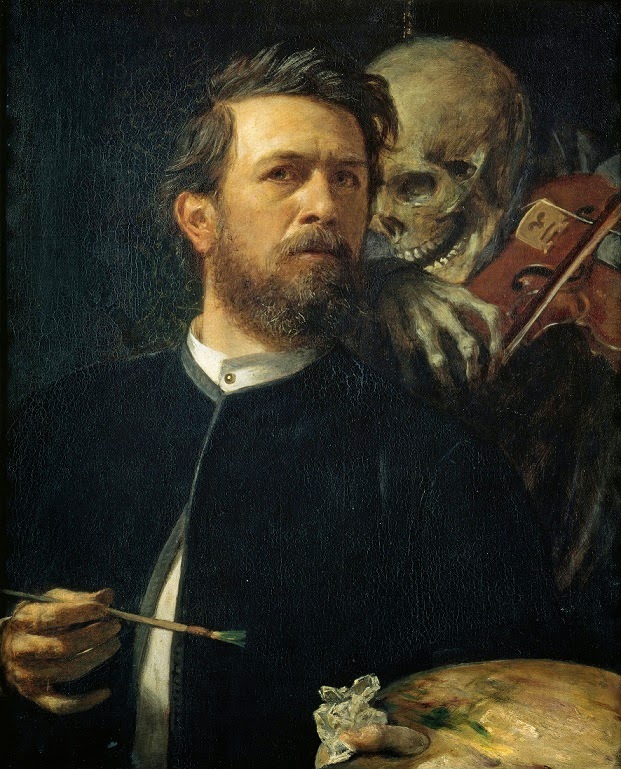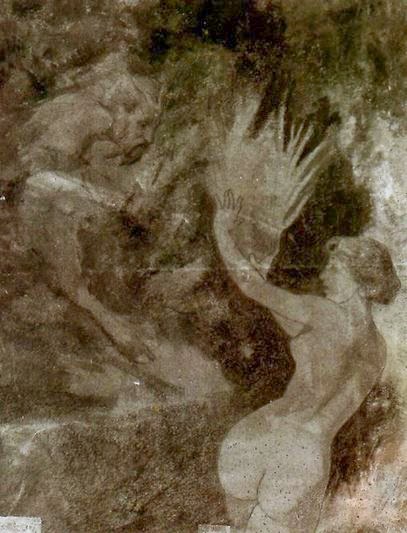Detail.
Detail of an early work, Willow the Wisp, 1862.
He was fascinated by classical antiquity and most of his paintings depict either classical themes or Italian landscapes.
Villa by the Sea, 1878.
The Lament of Mary Magdalene Over the Body of Christ, 1868.
During his own lifetime his most famous works were probably his five renderings of the Isle of the Dead, the first painted in 1880. Sergei Rachmaninoff, Max Reger, and Heinrich Schulz-Beuthen all composed tone poems based on it.
Hitler was a huge fan of Böcklin, owning as many as 11 of his paintings. The Plague, 1898.
In the mid twentieth century Böcklin fell out of fashion like a rock dropped from the top of the Eiffel Tower. When Marcel Duchamp, a bellwether in these matters, was asked which other artist had had the greatest influence on him, he answered "Arnold Böcklin." Since Duchamp never gave a serious answer to any such question from a critic, we can assume this was irony -- and anyway it is absurd to imagine Duchamp being influenced by such a mystically-minded painter as Böcklin. By 1947 modernist critic Clement Greenberg could write that Böcklin's work "is one of the most consummate expressions of all that is now disliked about the latter half of the nineteenth century." Above, Fir Trees at Sunrise.
I find his many portraits tedious and unattractive, so I haven't reproduced any here -- only his portraits of himself sparkle for me. And as I have noted before, I don't really get Symbolist Art. Still, Böcklin's best images, like Medusa, draw my eye and hold it and make me wonder.















No comments:
Post a Comment